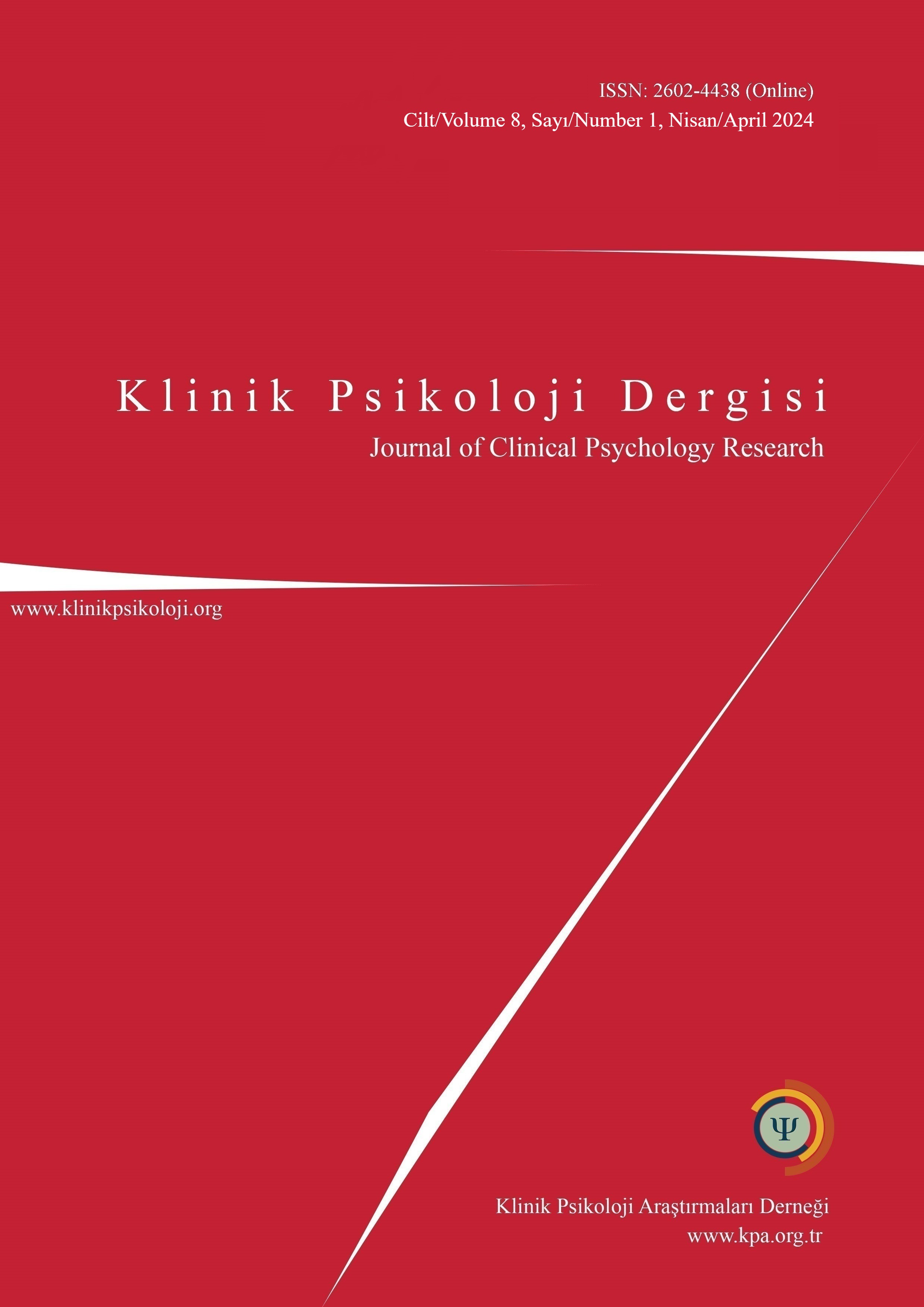Obsesif istem dışı düşüncelerin Bilişsel-Davranışçı Modelinin anlık ve geriye dönük ölçümler ile incelenmesi: Deneyim örnekleme yöntemine dair bir ön çalışma
Examination of the Cognitive-Behavioral Model of obsessive intrusive thoughts with momentary and retrospective measures: A preliminary study of the experience sampling method
Author(s): Gülşah Durna, Orçun YorulmazSubject(s): Psychology, Cognitive Psychology, Clinical psychology, Behaviorism
Published by: Klinik Psikoloji Araştırmaları Derneği
Keywords: obsessive-compulsive disorder; experience sampling; intrusive thoughts; emotions;
Summary/Abstract: Accurate and real-time evaluation of the effective factors in the development and maintenance of Obsessive-Compulsive Disorder is very important in terms of its treatment and prevention. In this study, an Experience Sampling Form was developed in order to examine the components of the Cognitive-Behavioral Model of Obsessive-Compulsive Disorder using the ecological momen-tary assessment method, and whether the components of the model were related to each other was comparatively evaluated by momentary and retrospective measurements. 55 adults partici-pated in the study through convenience sampling method. Participants first filled out the Socio-demographic Information Form and The Obsessional Intrusive Thoughts Inventory. Afterwards, they received 8 phone notifications at random times within fixed time intervals throughout a day with the application installed on their smartphones, and they were expected to fill out the Experi-ence Sampling Form for each notification. The results of the study showed that the variables of positive and negative affect, intrusive thought intensity, emotional reactions to intrusive thoughts, difficulty in control, control strategies and compulsion, which were evaluated momen-tarily, were significantly correlated with each other and with the relevant sub-factors of the Ob-sessional Intrusive Thoughts Inventory, which was measured retrospectively. In addition, the extreme groups formed from the sub-factors of Obsessional Intrusive Thoughts Inventory were compared in terms of the momentarily measured variables and the between group differences were obtained. The research results demonstrated that the experience sampling method can be used in line with the current model to examine the precipitating and maintaining cognitive factors in Obsessive-Compulsive Disorder and to evaluate the effective variables more realistically and momentarily. This method with high ecological validity is thought to make important contribu-tions to the evaluation and treatment of Obsessive-Compulsive Disorder.
Journal: Klinik Psikoloji Dergisi
- Issue Year: 8/2024
- Issue No: 1
- Page Range: 34-54
- Page Count: 21
- Language: Turkish

